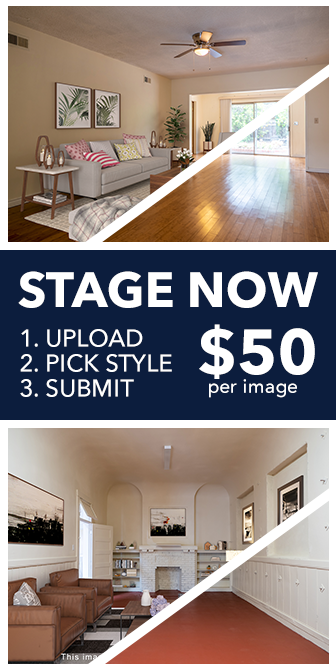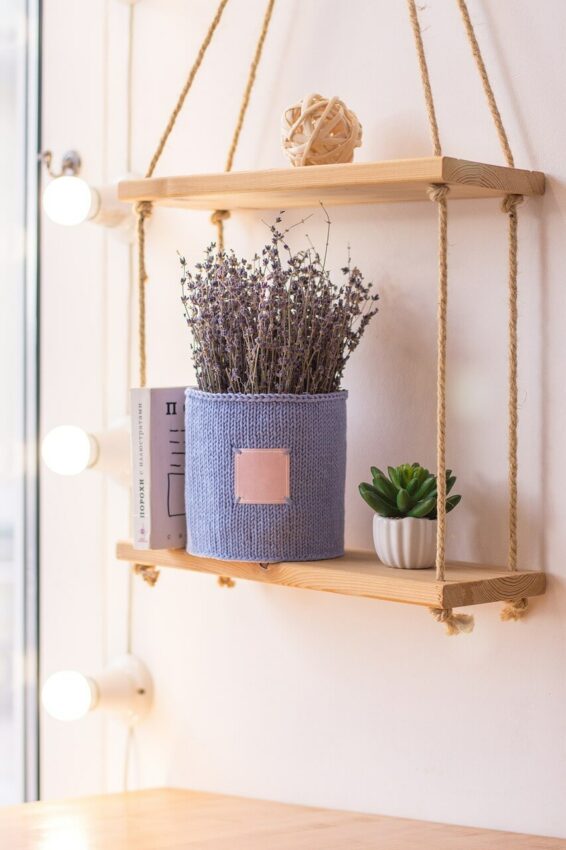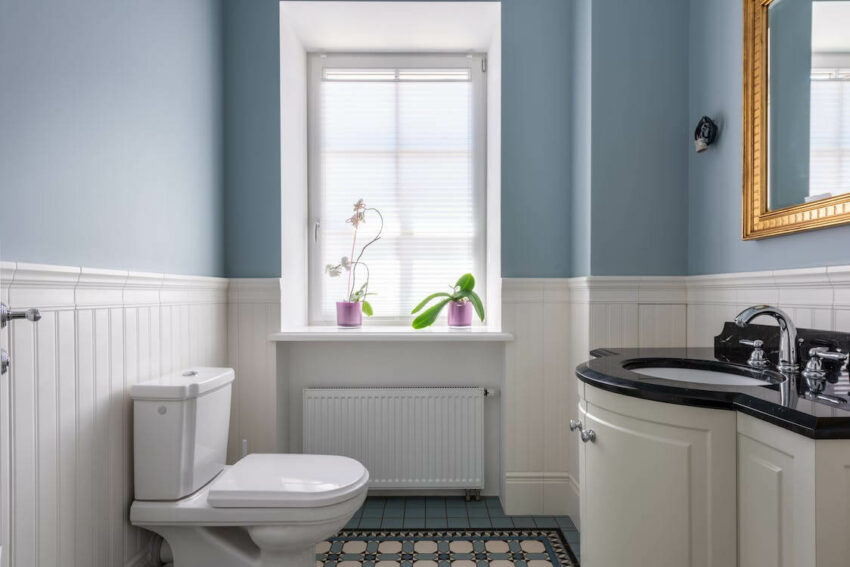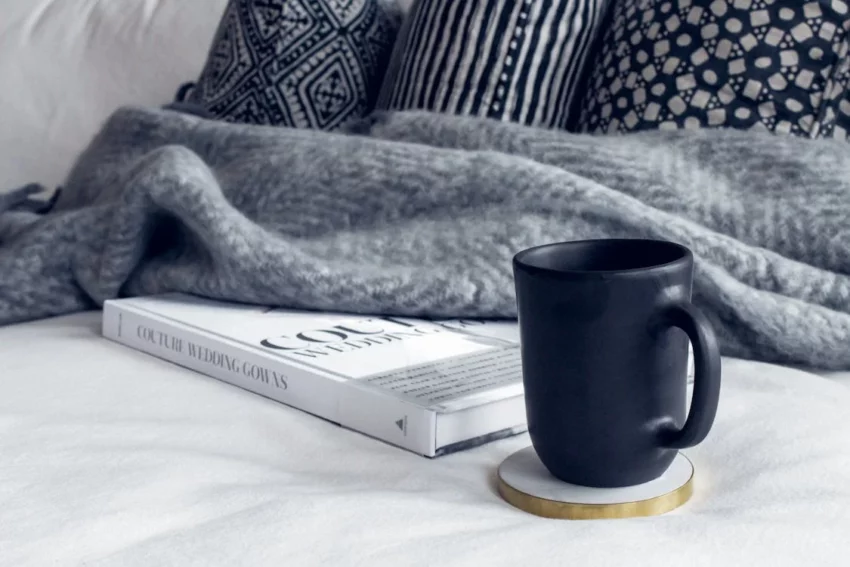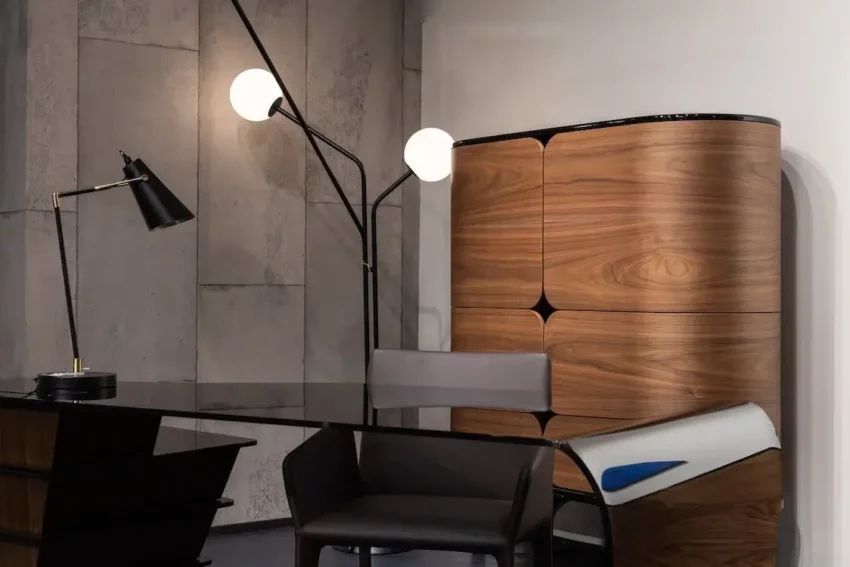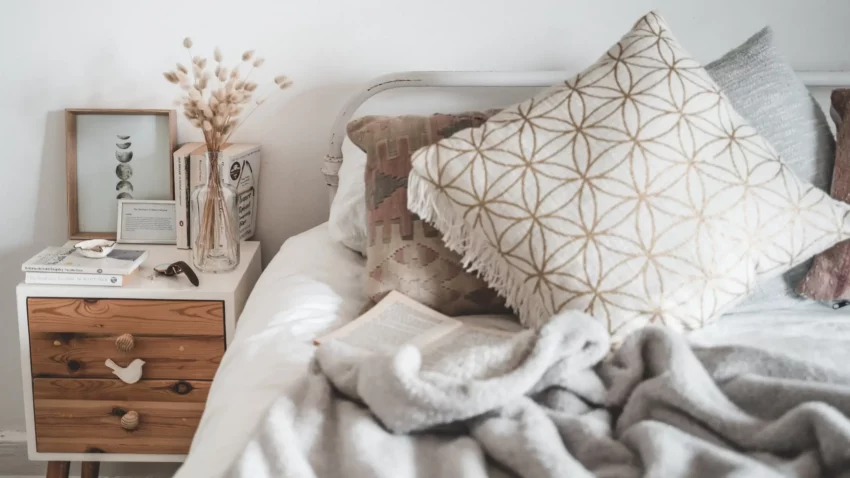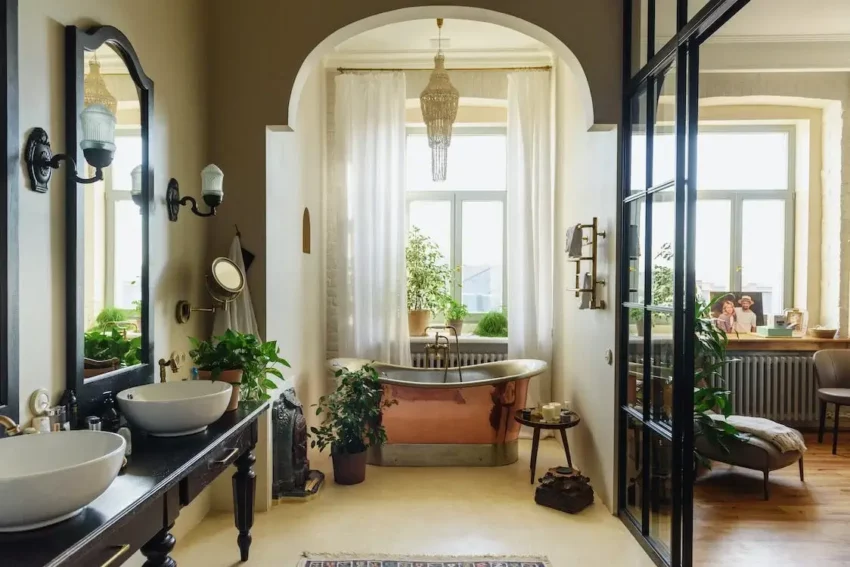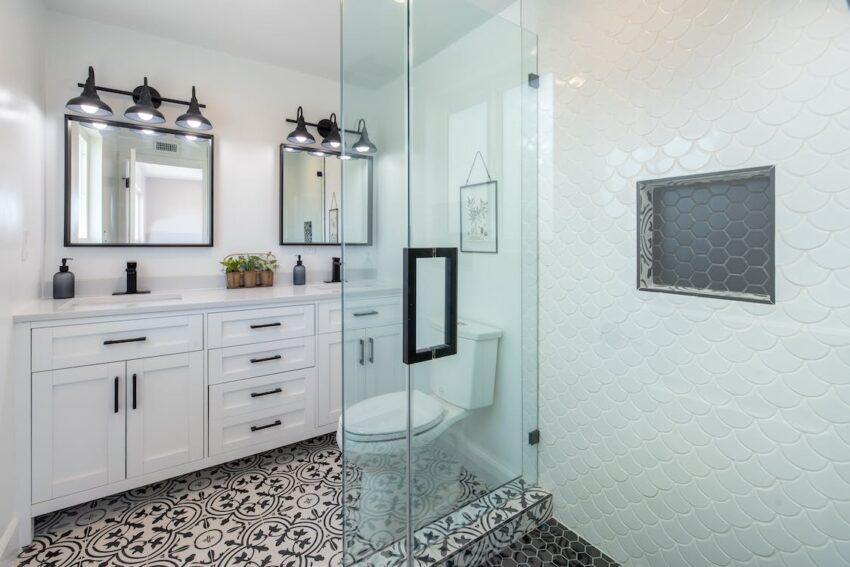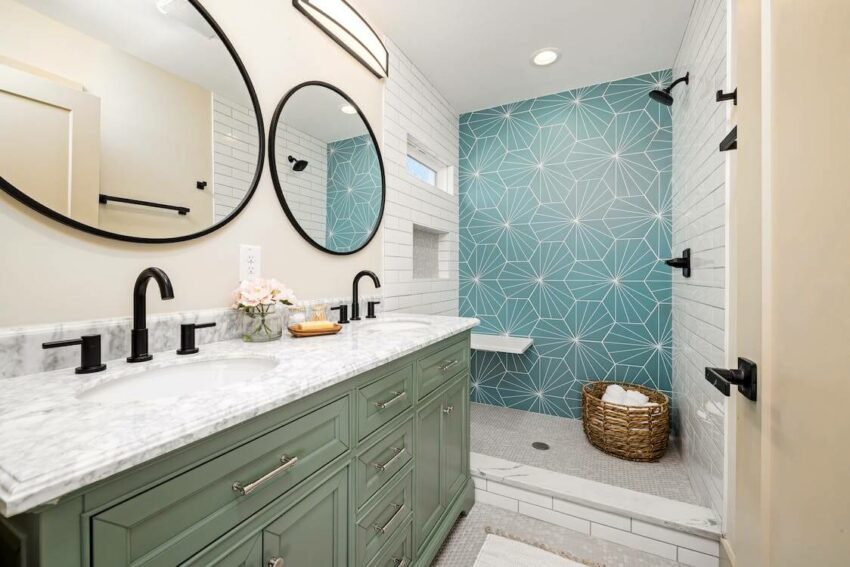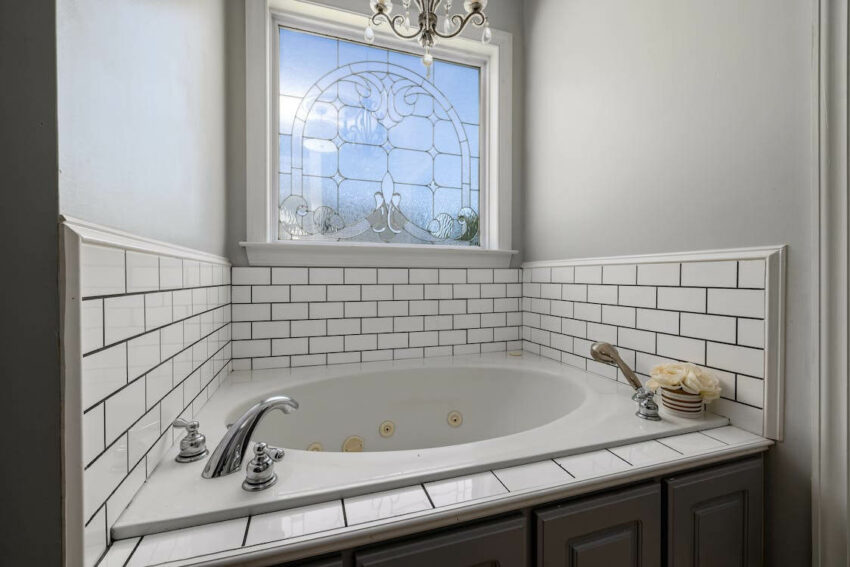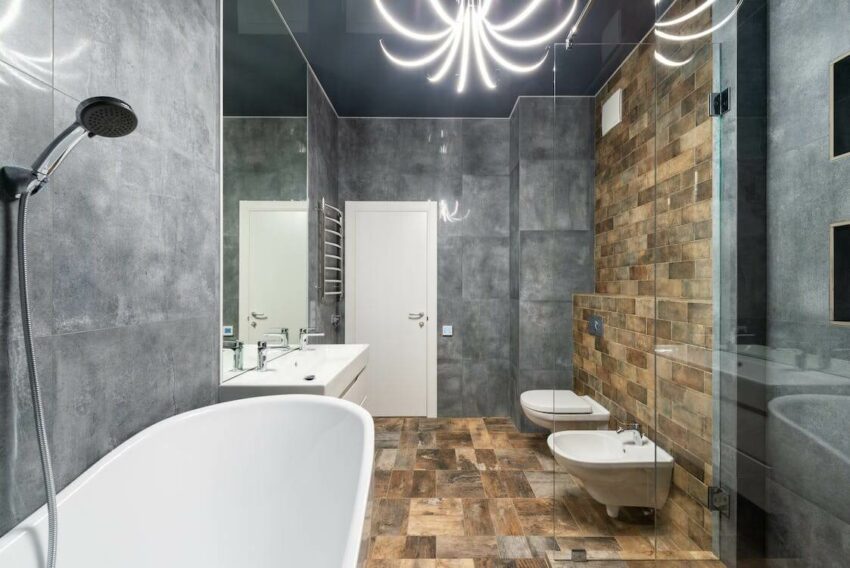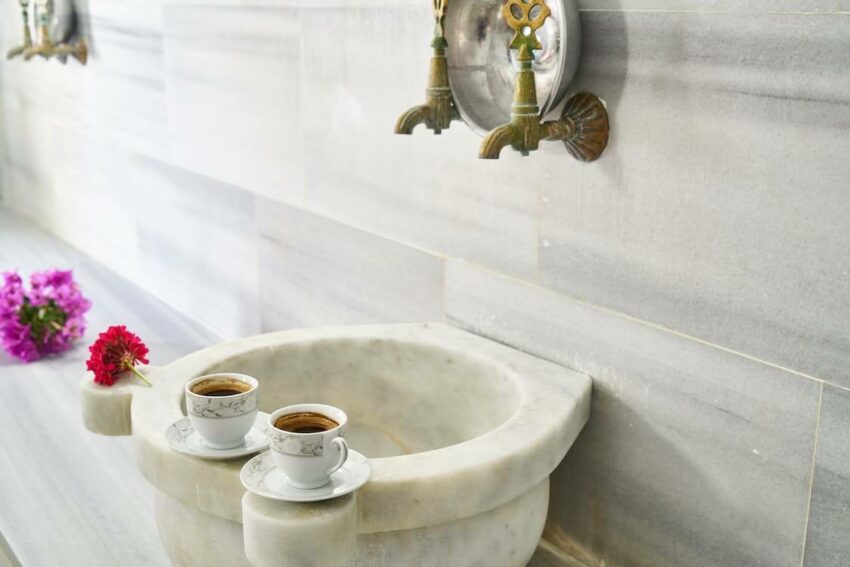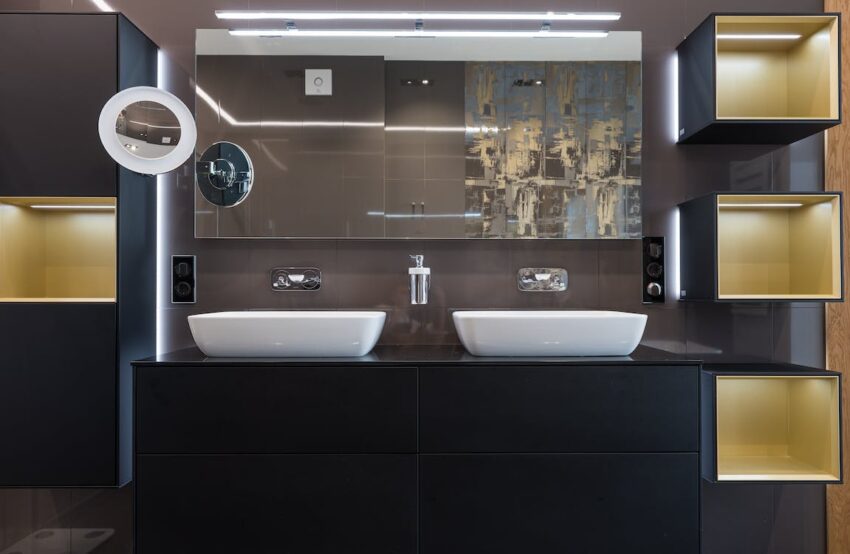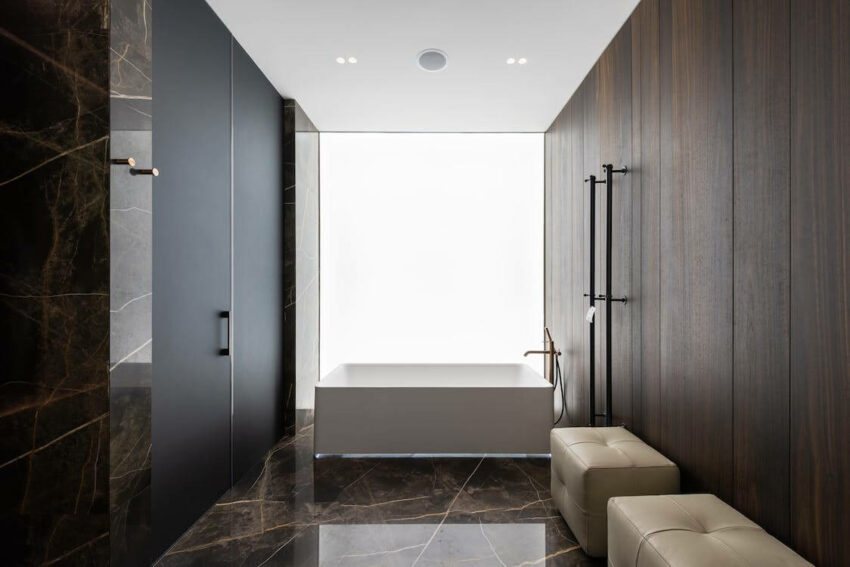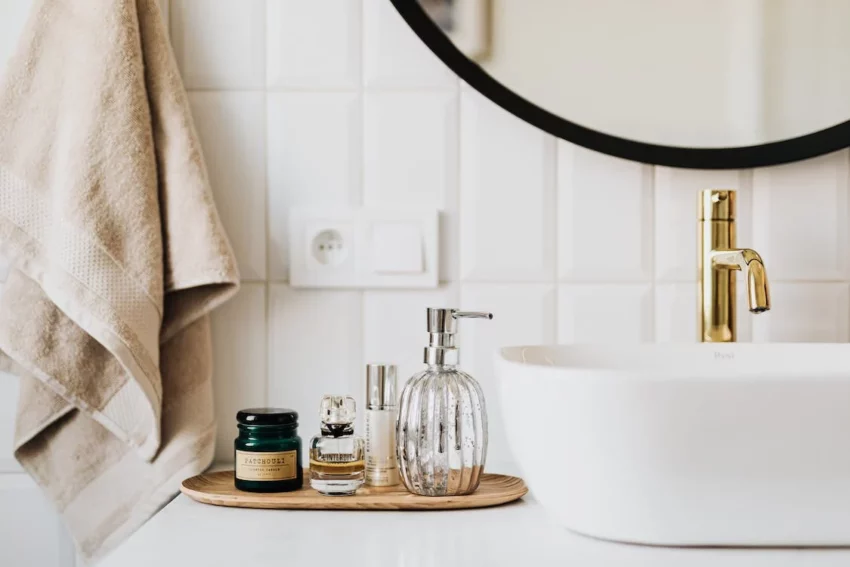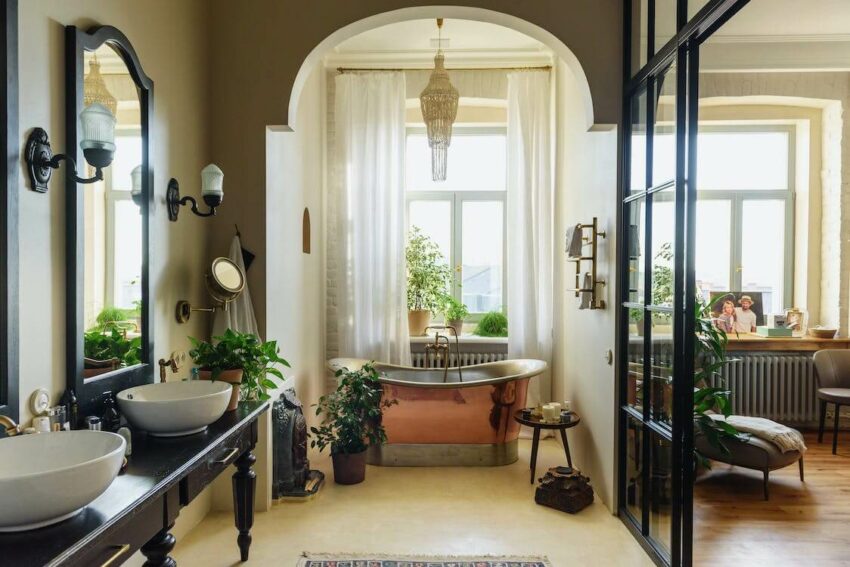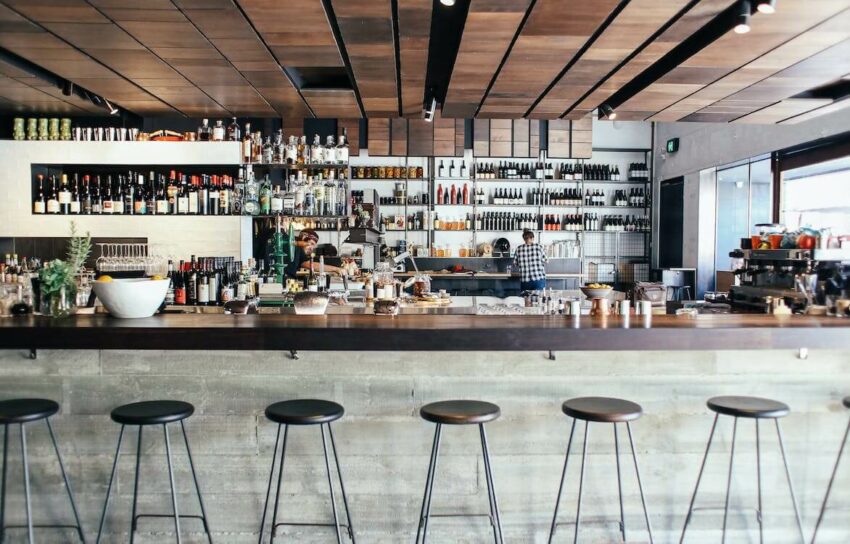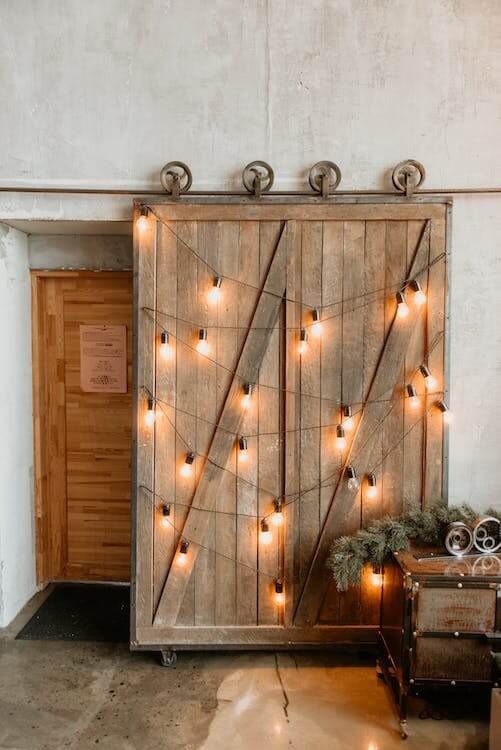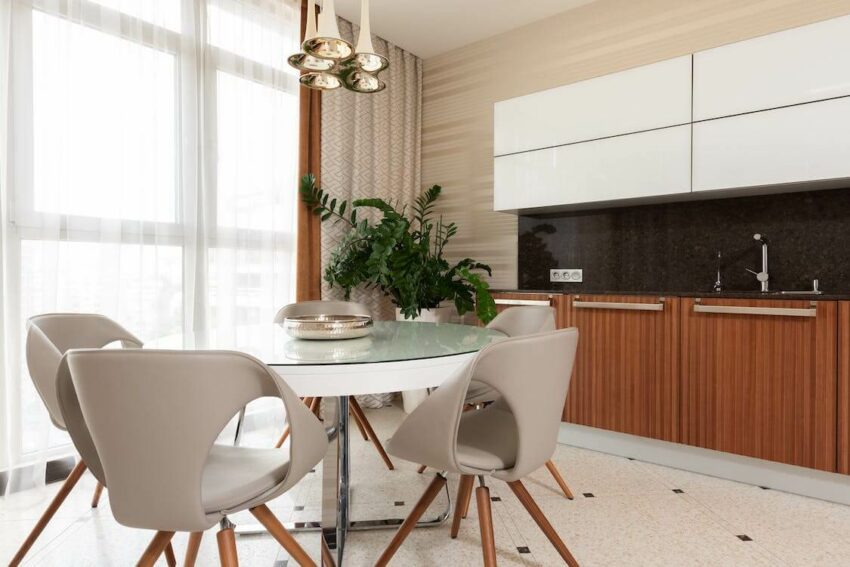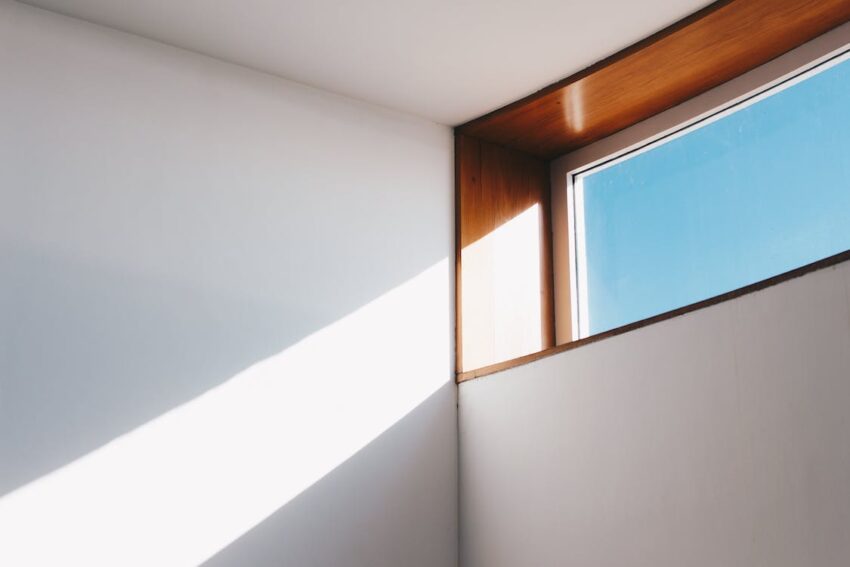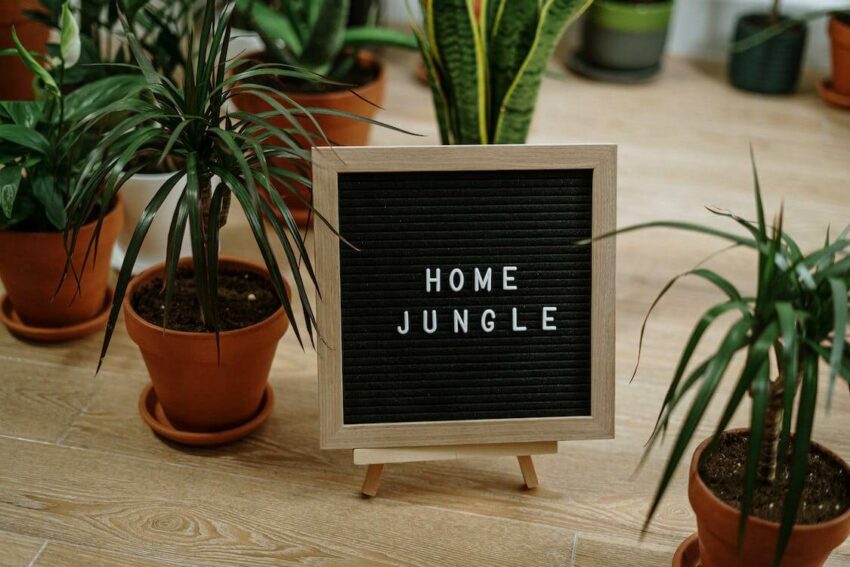“Welcome to the Complete Guide to the Bookshelf Desk – your comprehensive resource for discovering the versatility, history, design tips, and DIY inspiration behind this ingenious fusion of workspace and storage.”
In an age where remote work and online learning have become the norm, the importance of a functional and inspiring workspace cannot be overstated. Whether you’re a dedicated bibliophile, a professional in need of a home office, or a student seeking an ideal study nook, a bookshelf desk offers a versatile solution that merges storage, organization, and workspace efficiency. In this blog post, we’ll explore the world of bookshelf desks, their advantages, design tips, and how to integrate them seamlessly into your home or office.
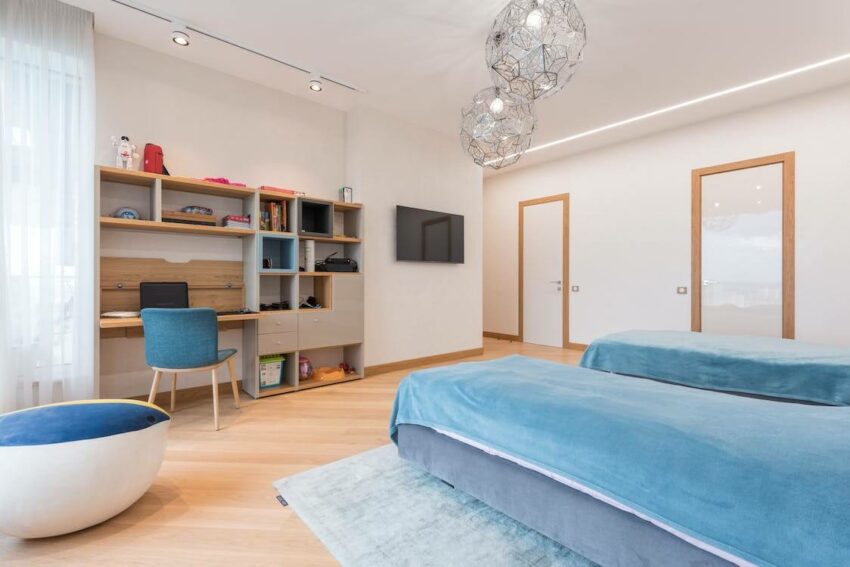
The Allure of the Bookshelf Desk
A bookshelf desk, as the name suggests, is a piece of furniture that combines a desk with shelves for books and other items. This innovative design concept marries two essential elements of any productive workspace: a functional work surface and convenient storage. Here’s why bookshelf desks have captured the imagination of many:
Space Optimization
In smaller living spaces, such as apartments or cozy home offices, maximizing every square inch is crucial. Bookshelf desks make efficient use of space, offering a compact footprint that combines your workspace with ample storage. This two-in-one solution eliminates the need for a separate bookshelf or storage unit, freeing up valuable floor space.
Organization and Accessibility
For avid readers or those who rely on reference materials, having books and resources within arm’s reach is a game-changer. A bookshelf desk allows you to organize your books, files, and supplies neatly on the shelves above or alongside your workspace, promoting tidiness and ease of access.

Aesthetic Appeal
A well-designed bookshelf desk can be a beautiful addition to your home or office. The fusion of the functional workspace and the visual appeal of a bookshelf creates a harmonious balance between utility and aesthetics. It’s an opportunity to showcase your favorite books, decorative items, or even indoor plants, turning your workspace into an inviting and inspiring environment.
Designing Your Bookshelf Desk
When it comes to designing the perfect bookshelf desk, there are several factors to consider:
- Space and Size – Begin by assessing the available space. Measure the area where you plan to place the bookshelf desk to ensure a proper fit. Consider the height, width, and depth of the desk, as well as the height of the shelves. A well-proportioned bookshelf desk will enhance the overall aesthetics of your workspace.
- Functionality – Think about how you’ll use the desk. Are you primarily working on a computer, sketching, or writing by hand? Do you need extra storage for office supplies, files, or equipment? Choose a bookshelf desk with features that align with your specific needs. Adjustable shelves or built-in cable management can be valuable additions.
- Material and Style – Select a material and style that complements your existing decor. Whether you prefer a sleek, modern look with metal and glass or a rustic, wooden aesthetic, there are bookshelf desk options to match your taste. The right choice can enhance the overall ambiance of your workspace.
- Ergonomics – Don’t compromise on ergonomics. Ensure that the desk’s height and layout promote comfortable and healthy working conditions. Invest in an ergonomic chair that complements your bookshelf desk for a complete and comfortable workspace.
- Personalization – Make your bookshelf desk your own by adding personal touches. Display framed photos, artwork, or inspirational quotes on the shelves. Incorporate lighting, such as desk lamps or string lights, to create a cozy atmosphere.
Integrating a Bookshelf Desk into Your Space
Now that you have your dream bookshelf desk, it’s time to integrate it into your space effectively:
- Placement – Choose the ideal location for your bookshelf desk. It could be against a wall, in a corner, or even in the center of a room, depending on your available space and preferences. Ensure that it receives adequate lighting, either from natural sources or well-placed lamps.
- Organization – Take advantage of the shelves to keep your workspace organized. Use bins, baskets, or decorative boxes to store smaller items like pens, paperclips, and cables. Arrange your books by genre, author, or color for an aesthetically pleasing look.
- Personalization – Infuse your personality into the space by adding decorative elements. Consider a colorful rug under your desk or art pieces on the walls. A comfortable chair cushion can also enhance both comfort and style.
- Greenery – Bring a touch of nature into your workspace by placing potted plants or succulents on the shelves or your desk. Greenery not only adds visual appeal but also promotes a calming and productive atmosphere.

Discovering the Best Bookshelf Desks: A Roundup of Functional and Stylish Options
Finding the perfect bookshelf desk can be a game-changer for your workspace. Whether you’re working from home, studying, or simply need an organized spot for your creative endeavors, a well-designed bookshelf desk can transform your productivity and overall ambiance. In this roundup, we’ll explore some of the great bookshelf desks available on the market today, each offering a unique blend of functionality and style.
- Tribesigns Computer Desk with Bookshelf – This sleek and modern bookshelf desk from Tribesigns is perfect for those who appreciate clean lines and ample storage. The integrated bookshelves provide ample space for your favorite books, decor, or office supplies. With a sturdy metal frame and a spacious desk surface, it’s designed to accommodate all your workspace needs. Plus, it’s available in a range of finishes to match your decor.
- Sauder Harbor View Computer Desk with Hutch – If you’re seeking a more traditional look with a coastal touch, the Sauder Harbor View desk might be your ideal choice. It features a hutch with cubbyhole storage and vertical storage compartments, perfect for displaying books and decor. The spacious desk area offers plenty of room to work or study comfortably. Its antique finish adds a touch of charm to any room.
- Prepac Wall-Mounted Floating Desk with Storage – For those with limited space, the Prepac Wall-Mounted Floating Desk is a space-saving marvel. This desk mounts securely to the wall, creating a floating effect. It includes multiple shelves for storage and organization, making it ideal for smaller rooms or as a minimalist workspace in any area of your home. Its clean, contemporary design complements modern decor.
- Walker Edison Furniture Company Modern Corner L Shaped Glass Computer Desk – If you’re looking to maximize your workspace in a corner of your room, the Walker Edison L Shaped Glass Computer Desk is a fantastic choice. It features a stylish glass top and sturdy metal frame. The L-shaped design provides ample room for your computer and accessories, while the integrated shelves offer storage and display options. This desk is perfect for modern and minimalist interior styles.
- Furinno Efficient Home Computer Desk with Shelves – For budget-conscious shoppers who still want functionality and style, the Furinno Efficient Home Computer Desk is a great pick. This compact and simple desk includes open shelves for storage and organization. Its minimalistic design makes it versatile and suitable for various room styles. It’s an excellent choice for small apartments or dorm rooms.
- Winsome Wood Delta Home Office Desk – For a touch of classic elegance, consider the Winsome Wood Delta Home Office Desk. Made of solid wood, this desk exudes sophistication. It features a spacious workspace and multiple shelves, making it an ideal choice for those who need both functionality and style. Its rich walnut finish adds warmth to any room.
- Nathan James Theo Wood Ladder Bookshelf Desk – For a unique and space-efficient design, the Nathan James Theo Ladder Bookshelf Desk combines a desk and bookshelf in a ladder-style configuration. It’s perfect for small spaces or for adding a touch of contemporary flair to your decor. The open shelves offer easy access to your books and decorative items.
Choosing the right bookshelf desk is a personal decision that depends on your workspace needs and aesthetic preferences. Whether you prefer a modern, minimalist look or a more traditional style, there are great bookshelf desks on the market to suit your taste and budget. Remember to consider factors like size, storage capacity, and material when making your selection. With the right bookshelf desk, you can create a functional and stylish workspace that inspires productivity and creativity.

Crafting Your Own DIY Bookshelf Desk: A Creative and Functional Project
Are you a fan of hands-on projects and looking for a way to enhance your workspace? Building your own DIY bookshelf desk can be a rewarding and cost-effective way to create a customized workspace that meets your unique needs and style preferences. In this guide, we’ll walk you through the steps to craft your very own bookshelf desk.
Tools and Materials You’ll Need
Before you dive into your DIY project, gather the necessary tools and materials. Here’s a basic list to get you started:
Tools:
- Measuring tape
- Saw (circular saw or miter saw)
- Drill and drill bits
- Screwdriver
- Sanding block or electric sander
- Clamps
- Level
- Paintbrushes or rollers
Materials:
- Plywood sheets (3/4-inch thick)
- Wooden boards (for the bookshelves and desk surface)
- Wood screws
- Wood glue
- L-shaped brackets
- Paint or wood stain
- Polyurethane finish (optional for protection)
Step-by-Step Guide
- Design Your Bookshelf Desk – Begin by sketching out your design. Consider the dimensions, including the height, width, and depth of your desk and bookshelves. Think about the number of shelves you want, their spacing, and the size of your desk surface. Your design should match your workspace needs and fit the available space in your room.
- Measure and Cut – Using your measuring tape and saw, carefully measure and cut the plywood sheets and wooden boards according to your design. Double-check your measurements to ensure accuracy, as precise cuts are crucial for a stable and well-fitted desk.
- Assemble the Bookshelves – Start by assembling the bookshelves. Attach the wooden boards to the sides of the plywood sheets to create the bookshelf frames. Use wood glue and screws to secure them in place. Ensure the shelves are level and spaced evenly. You can customize the height of the shelves to accommodate your books and other items.
- Build the Desk Frame – Construct the desk frame using the wooden boards and plywood sheets. Attach the legs to the bottom of the desk frame for stability. You may want to add diagonal supports for extra strength, especially if you plan to place heavy items on the desk.
- Combine Desk and Bookshelves – Position the desk frame between the bookshelves. Secure the desk to the bookshelves using L-shaped brackets. This will ensure that your desk and bookshelves are connected securely.
- Sand and Finish – Smooth any rough edges or surfaces using your sanding block or electric sander. Sanding not only improves the appearance but also prevents splinters. Once sanded, you can choose to paint or stain your bookshelf desk. Apply a polyurethane finish if you want extra protection and durability.
- Arrange Your Workspace – After your DIY bookshelf desk is dry and ready, arrange your workspace to your liking. Add your books, office supplies, and decorative items to the shelves. Consider adding a comfortable chair that complements your desk’s style.

Customization and Personalization
The beauty of a DIY project is the opportunity to personalize your creation. You can choose the type of wood, paint colors, and finishes that match your decor and style preferences. Additionally, you can add features like cable management solutions, built-in lighting, or even a corkboard or chalkboard surface for notes and reminders.
Crafting your own DIY bookshelf desk is not only a practical way to create a customized workspace but also a fulfilling and creative endeavor. With the right tools, materials, and a bit of patience, you can build a functional and stylish bookshelf desk that not only serves your work or study needs but also becomes a unique piece of furniture that reflects your personality and craftsmanship. So, roll up your sleeves and get ready to enjoy the benefits of a workspace tailored to you.
The Evolution of the Bookshelf Desk: A Historical Journey through Workspace Innovation
In our modern world, where work and leisure often intertwine, the bookshelf desk stands as a testament to the enduring human desire for efficiency and elegance in our living and working spaces. The history of the bookshelf desk is a fascinating journey through time, revealing how this ingenious piece of furniture has evolved to meet the changing needs and tastes of society. Join us on a historical exploration of the bookshelf desk’s origins and development.
Ancient Origins
The concept of a workspace with integrated storage can be traced back to ancient civilizations. In ancient Egypt, scribes and scholars often worked at sloping desks with built-in compartments for scrolls and writing tools. These early versions of the bookshelf desk reflected the practicality and organization valued by societies of that era.

Renaissance Innovation
During the Renaissance, a period marked by a resurgence of interest in art, culture, and learning, furniture design took a leap forward. Scholars and writers required efficient storage for their growing collections of books and manuscripts. It was during this time that the secretary desk, a precursor to the bookshelf desk, emerged. Secretary desks featured a hinged writing surface that, when opened, revealed compartments and cubbies for storing documents and writing materials. These desks also often had a bookshelf or cabinet above the writing surface, providing a place to store books.
The Rise of the Rolltop Desk
The 19th century witnessed the popularity of the rolltop desk, which incorporated a novel method of concealing the workspace. The rolltop desk featured a flexible tambour cover that could be rolled down to hide the contents of the desk, providing privacy and security. This design innovation paved the way for the integration of shelves and book storage above the desk surface.
Modern Adaptations
The mid-20th century brought significant changes to workspace design. With the advent of modernism and the rise of home offices, furniture designers began to prioritize both functionality and aesthetics. The bookshelf desk, as we know it today, started to take shape during this period.

In the 1950s and 1960s, designers like George Nelson and Charles and Ray Eames popularized modular furniture systems that included desks with attached shelving units. These designs emphasized clean lines, minimalism, and the efficient use of space, characteristics that continue to define contemporary bookshelf desks.
The 21st Century Bookshelf Desk
Today, the bookshelf desk has become an integral part of the modern home and office. Advances in materials, manufacturing, and ergonomics have enabled a wide range of design possibilities. From sleek, minimalist designs that cater to the tech-savvy worker to rustic, farmhouse-inspired styles that appeal to those seeking a cozy home office, there is a bookshelf desk to suit every taste.
Moreover, the digital age has transformed the way we work and store information. Many bookshelf desks now incorporate features like cable management systems and built-in power outlets to accommodate our ever-evolving technology needs.
The history of the bookshelf desk is a testament to the enduring need for functional and stylish workspace solutions. From its humble beginnings in ancient Egypt to its modern, multifaceted forms, the bookshelf desk has adapted to the changing demands of society and technology. Today, it continues to play a vital role in our homes and offices, offering a harmonious blend of workspace and storage, efficiency, and aesthetics. As we look to the future of work and design, one can only wonder how the bookshelf desk will continue to evolve and shape our workspaces for generations to come.

Conclusion
A bookshelf desk is a versatile and practical addition to any home or office. It offers space-saving solutions, promotes organization, and enhances the aesthetics of your workspace. By carefully considering your needs, style preferences, and ergonomics, you can create a bookshelf desk that not only meets your functional requirements but also inspires you to work and learn in a welcoming environment. So, whether you’re a student, a professional, or an avid reader, consider investing in a bookshelf desk to elevate your workspace to new heights of productivity and creativity.
Try using our free new AI virtual staging web app to add a bookshelf desk to your empty room to see what it might look like!






